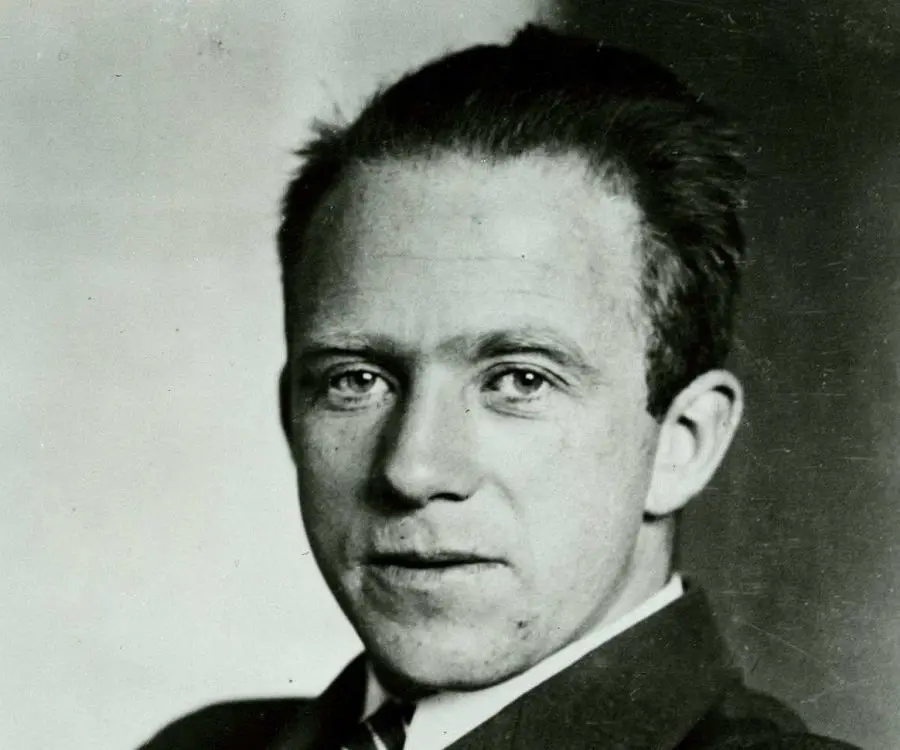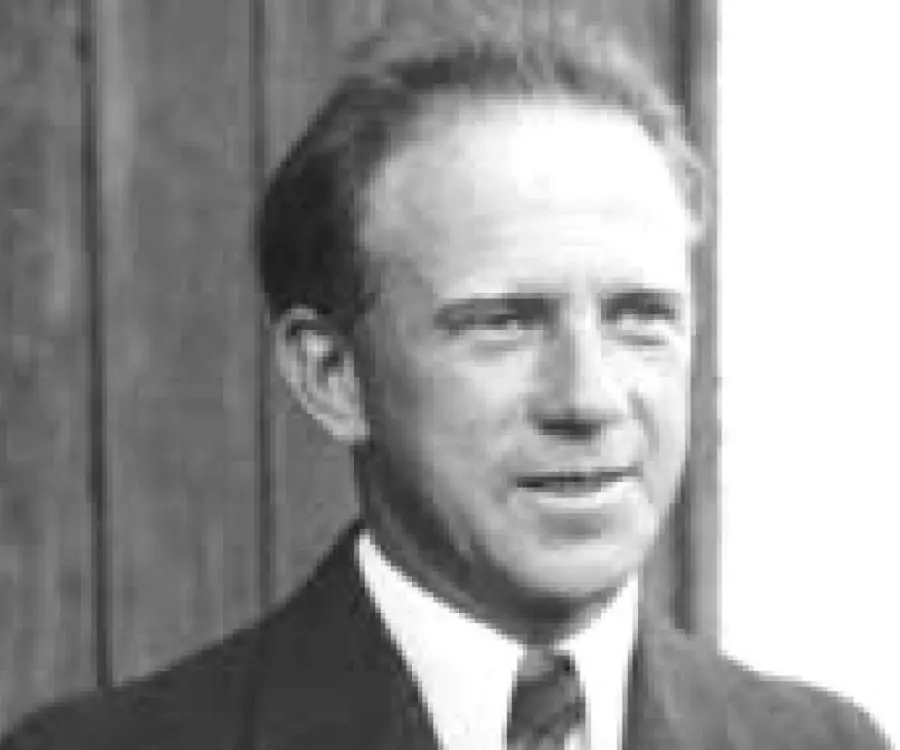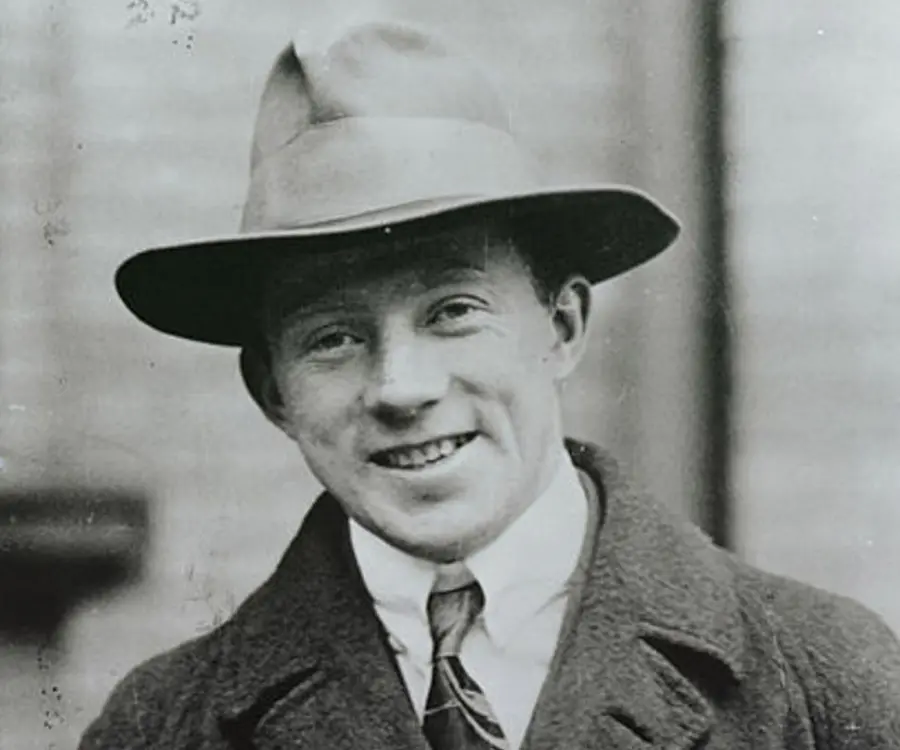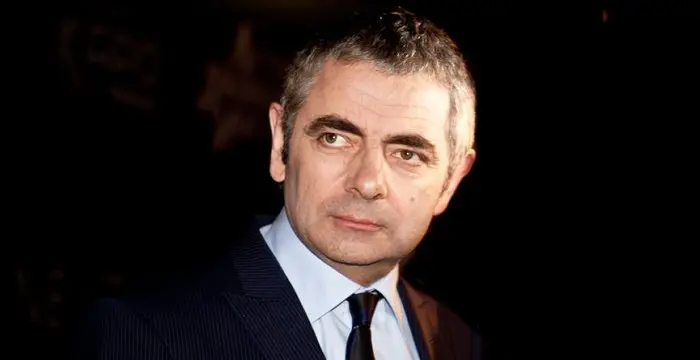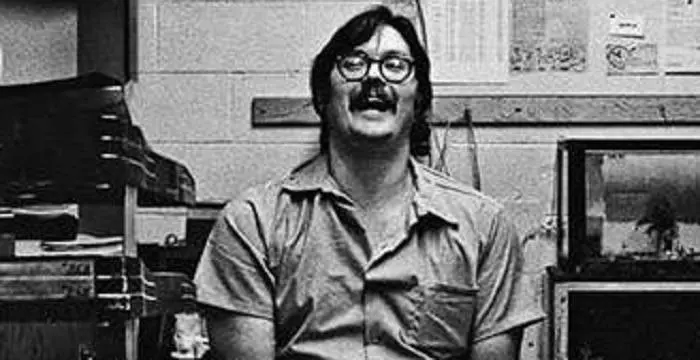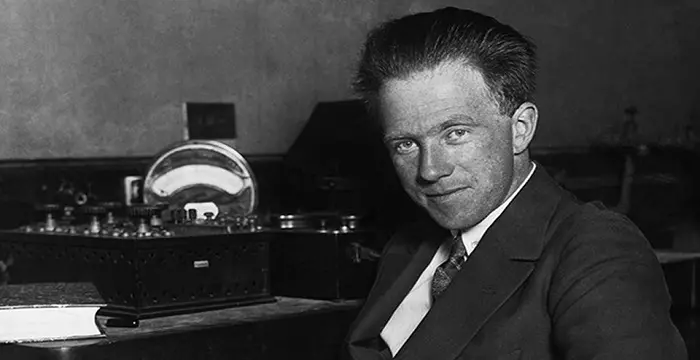
Werner Heisenberg - Physicists, Timeline and Facts
Werner Heisenberg's Personal Details
Werner Heisenberg was a Nobel Prize winning German scientist who propounded the Uncertainty Principle
| Information | Detail |
|---|---|
| Birthday | December 5, 1901 |
| Died on | February 1, 1976 |
| Nationality | German |
| Famous | Scientists, Physicists, ENTP |
| Hobbies | Music |
| Nick names | Werner Heisenberg |
| Spouses | Elisabeth Heisenberg |
| Siblings | Erwin Heisenberg |
| Known as | Werner Karl Heisenberg |
| Childrens | Barbara Heisenberg, Christine Heisenberg, Jochen Heisenberg, Maria Heisenberg, Martin Heisenberg, Verena Heisenberg, Wolfgang Heisenberg |
| Universities |
|
| Birth Place | Würzburg |
| Religion | Lutheranism |
| Gender | Male |
| Father | August Heisenberg |
| Mother | Annie Wecklein |
| Sun Sign | Sagittarius |
| Born in | Würzburg |
| Famous as | Physicist |
| Died at Age | 74 |
// Famous Physicists
Henry Cavendish
Henry Cavendish was a theoretical chemist and physicist, renowned for discovery of hydrogen and calculation of the mass of earth. To know more about his childhood, profile, timeline and career read on
Walter Kohn
Nobel Laureate Walter Kohn was an Austrian-born American theoretical chemist and physicist. Check out this biography to know about his childhood, life, achievements, works & timeline.
Nikola Tesla
Nikola Tesla was a Serbian-American inventor, best known for his development of alternating current electrical systems. This biography of Nikola Tesla provides detailed information about his childhood, life, achievements, works & timeline.
Werner Heisenberg's photo
Who is Werner Heisenberg?
Werner Heisenberg was a German scientist and philosopher who was influential in the research of quantum mechanics in the mid-1900s. His work overlapped with the controversial political history of 20th-century Germany; his substantial theories in physics were published in the 1920s and 1930s. During the WWII he made important contribution in the development of nuclear reactor and he was also the head of nuclear research during the Nazi period. He was instrumental in rebuilding the scientific community in West Germany after the war. He proposed a model of atomic nucleus which consisted of protons the positively charged particles and some particles which possessed no charge or the neutrons. His discovery earned him the prestigious Nobel Prize in Physics. Other than his work on atomic nucleus he also made significant contribution in the fields of ferromagnetism and cosmic radiation. Heisenberg devoted a large portion of his life to teaching as he held important teaching positions at the universities of Copenhagen, Berlin, Leipzig and Munich. He worked closely with the leading German scientists of his generation including Niels Bohr and Max Born, and he advised doctoral students that would go on to contribute significant findings to the fields of physical science. His powerful reputation as a researcher and academic enabled him to lecture widely across Germany and abroad, spreading his theories around the world
// Famous Scientists
Juliane Koepcke
Juliane Koepcke is a German-Peruvian biologist, who was the lone survivor among the 92 passengers and crew of the ill-fated LANSA Flight 508 that crashed in the Peruvian rainforest on 24 December 1971. Know more about her life in this biography.
Henry Cavendish
Henry Cavendish was a theoretical chemist and physicist, renowned for discovery of hydrogen and calculation of the mass of earth. To know more about his childhood, profile, timeline and career read on
Konstantin Tsiolkovsky
Konstantin Tsiolkovsky was a Russian rocket scientist and a pioneer of astronautics. This biography provides detailed information about his childhood, family, personal life, career, achievements, etc.
Childhood & Early Life
Heisenberg was born on December 5, 1901, in Würzburg, Germany. His father was a professor of medieval and Greek studies.
His brother Erwin was one year older and was a constant source of competition. Erwin grew up to become a chemist.
He studied physics under Max Born at the ‘University of Munich’, receiving his doctorate in 1923. The physicist Niels Bohr was also very influential in Werner’s career, under whom the latter learnt the nuances of atomic physics.
Career
After completing his doctorate, he went to research with his hero Niels Bohr in 1925. Their work at the ‘University of Copenhagen’ resulted in one of Heisenberg's first important papers.
He became a professor at the ‘University of Leipzig’ in 1927 and began teaching doctoral students. His program was highly sought after and resulted in dozens of important scientific alumni.
His teaching often afforded him the opportunity to travel and lecture outside of Germany. He gave lectures in Japan, India, and the United States in 1929.
His work creating a neutron-proton model of the nucleus was published in three significant papers. He was honored with the Nobel Prize in 1932 for his discovery.
When Hitler assumed control of Germany in 1933, Heisenberg was criticized by the SS for supporting Jewish scientists. He was threatened to be sent to a concentration camp despite his unwavering support for Germany.
In 1941, he left Leipzig to teach at the ‘University of Berlin’. He was named director of the important ‘Kaiser Wilhelm Institute for Physics’.
During World War II, Heisenberg served in various leadership roles researching the development of the nuclear bomb. He was captured on May 3, 1945 by Allied forces, four days before the German surrender.
After the war, he was named director of the ‘Max Planck Institute for Physics’. He served in that position from 1948 to 1970.
He was elected president of the ‘Alexander von Humboldt Foundation’ in 1953. The foundation worked to bring foreign scientists to Germany for work.
Invited by many prestigious colleges around the world, he continued giving guest lectures. His 1955-56 ‘Gifford Lectures’ at the ‘University of Saint Andrews’ were published in a collection.
Major Works
His paper on quantum mechanics in 1925 was a major scientific breakthrough and led to developments in matrix mechanics. He worked with the Austrian physicist Wolfgang Pauli and the two became close friends.
He developed the uncertainty principle in 1927 while researching at the ‘University of Copenhagen’. This theory established the inverse relationship between the precise position of a particle and its momentum which became a fundamental principle in further physics research.
James Chadwick discovered the neutron in 1932, leading to Heisenberg's neutron-proton model in the same year. His three papers on the topic were monumental in the field of quantum physics.
Awards & Achievements
He won the Nobel Prize in Physics in 1932 for his neutron-proton model and theory of quantum mechanics. His quantum theory resulted in the important discovery of allotropic forms of hydrogen.
In 1933, he won the ‘Max Planck Medal’ of the ‘German Physical Society’. The organization is the largest association for physicists in the world.
Personal Life & Legacy
He met Elisabeth Schumacher at a music recital in January 1937 and they were married four months later. The couple enjoyed classical music and Heisenberg was experienced as a pianist.
The couple had seven children over thirteen years, including twins in January 1938. Their son Jochen went on to study physics and teach at the ‘University of New Hampshire’.
Despite his devotion to science, he was a practicing Lutheran for his entire life. He gave many lectures about science and religion over the course of his career.
He suffered from cancer of the gall bladder and kidneys and died on April 1, 1976. He is buried in the famous ‘Munich Waldfriedhof’ cemetery.
Trivia
This famous personality’s grave stone is inscribed with the words "He lies here, somewhere." This is a joke about his famous Uncertainty Principle.
// Famous ENTP
Rowan Atkinson
Rowan Atkinson is an English actor and screenwriter, famous for his work in ‘Mr. Bean’ and ‘Blackadder’. This biography profiles his childhood, life, acting career, achievements and timeline.
Salma Hayek
Salma Hayek is a Mexican-American actress born of Spanish-Lebanese parents. Read this biography to learn about her profile, childhood, life and timeline.
Stephen Fry
Stephen Fry is a comedian, actor, author, television and radio presenter. Read the biography and know all about his childhood, career, profile and timeline.
Werner Heisenberg's awards
| Year | Name | Award |
|---|---|---|
Other | ||
| 0 | 1932 - Nobel Prize in Physics | |
| 0 | 1933 - Max Planck Medal | |
Werner Heisenberg biography timelines
- // 5th Dec 1901Heisenberg was born on December 5, 1901, in Würzburg, Germany. His father was a professor of medieval and Greek studies.
- // 1923He studied physics under Max Born at the ‘University of Munich’, receiving his doctorate in 1923. The physicist Niels Bohr was also very influential in Werner’s career, under whom the latter learnt the nuances of atomic physics.
- // 1925After completing his doctorate, he went to research with his hero Niels Bohr in 1925. Their work at the ‘University of Copenhagen’ resulted in one of Heisenberg's first important papers.
- // 1925His paper on quantum mechanics in 1925 was a major scientific breakthrough and led to developments in matrix mechanics. He worked with the Austrian physicist Wolfgang Pauli and the two became close friends.
- // 1927He became a professor at the ‘University of Leipzig’ in 1927 and began teaching doctoral students. His program was highly sought after and resulted in dozens of important scientific alumni.
- // 1927He developed the uncertainty principle in 1927 while researching at the ‘University of Copenhagen’. This theory established the inverse relationship between the precise position of a particle and its momentum which became a fundamental principle in further physics research.
- // 1929His teaching often afforded him the opportunity to travel and lecture outside of Germany. He gave lectures in Japan, India, and the United States in 1929.
- // 1932His work creating a neutron-proton model of the nucleus was published in three significant papers. He was honored with the Nobel Prize in 1932 for his discovery.
- // 1932James Chadwick discovered the neutron in 1932, leading to Heisenberg's neutron-proton model in the same year. His three papers on the topic were monumental in the field of quantum physics.
- // 1932He won the Nobel Prize in Physics in 1932 for his neutron-proton model and theory of quantum mechanics. His quantum theory resulted in the important discovery of allotropic forms of hydrogen.
- // 1933When Hitler assumed control of Germany in 1933, Heisenberg was criticized by the SS for supporting Jewish scientists. He was threatened to be sent to a concentration camp despite his unwavering support for Germany.
- // 1933In 1933, he won the ‘Max Planck Medal’ of the ‘German Physical Society’. The organization is the largest association for physicists in the world.
- // Jan 1937He met Elisabeth Schumacher at a music recital in January 1937 and they were married four months later. The couple enjoyed classical music and Heisenberg was experienced as a pianist.
- // Jan 1938The couple had seven children over thirteen years, including twins in January 1938. Their son Jochen went on to study physics and teach at the ‘University of New Hampshire’.
- // 1941In 1941, he left Leipzig to teach at the ‘University of Berlin’. He was named director of the important ‘Kaiser Wilhelm Institute for Physics’.
- // 3rd May 1945During World War II, Heisenberg served in various leadership roles researching the development of the nuclear bomb. He was captured on May 3, 1945 by Allied forces, four days before the German surrender.
- // 1948 To 1970After the war, he was named director of the ‘Max Planck Institute for Physics’. He served in that position from 1948 to 1970.
- // 1953He was elected president of the ‘Alexander von Humboldt Foundation’ in 1953. The foundation worked to bring foreign scientists to Germany for work.
- // 1955 To 1956Invited by many prestigious colleges around the world, he continued giving guest lectures. His 1955-56 ‘Gifford Lectures’ at the ‘University of Saint Andrews’ were published in a collection.
- // 1st Apr 1976He suffered from cancer of the gall bladder and kidneys and died on April 1, 1976. He is buried in the famous ‘Munich Waldfriedhof’ cemetery.
// Famous Sagittarius Celebrities peoples
Billie Eilish
Billie Eilish Pirate Baird O’Connell is an American singer and songwriter. Check out this biography to know about her childhood, family, personal life, birthday, etc.
Jacelyn Reeves
Jacelyn Reeves is a former flight attendant who once had a fling with Clint Eastwood. Check out this biography to know about her birthday, childhood, family life, achievements and fun facts about her.
Edmund Kemper
Edmund Kemper is a convicted serial killer from America who murdered ten people. Check out this biography to know about his childhood, life, crimes and other facts about him.
Pietro Boselli
Pietro Boselli is an Italian model, engineer, teacher, and fitness athlete who became famous as the ‘world’s sexiest math teacher’. Check out this biography to know about his birthday, childhood, family life, achievements and fun facts about him.
Niqoles Heard
Lil Niqo is an American rapper and musical artist. Let’s take a look at his family and personal life including age, date of birth, net worth, girlfriends, and fun facts.
Ted Nugent
Ted Nugent is a hard rock musician known for his hits ‘Stranglehold’ and ‘Cat Scratch Fever’. This biography of Ted Nugent provides detailed information about his childhood, life, achievements, works & timeline.
Werner Heisenberg's FAQ
What is Werner Heisenberg birthday?
Werner Heisenberg was born at 1901-12-05
When was Werner Heisenberg died?
Werner Heisenberg was died at 1976-02-01
Where was Werner Heisenberg died?
Werner Heisenberg was died in Munich
Which age was Werner Heisenberg died?
Werner Heisenberg was died at age 74
Where is Werner Heisenberg's birth place?
Werner Heisenberg was born in Würzburg
What is Werner Heisenberg nationalities?
Werner Heisenberg's nationalities is German
What is Werner Heisenberg hobbies?
Werner Heisenberg's hobbies is Music
What is Werner Heisenberg nick names?
Werner Heisenberg's nickNames is Werner Heisenberg
Who is Werner Heisenberg spouses?
Werner Heisenberg's spouses is Elisabeth Heisenberg
Who is Werner Heisenberg siblings?
Werner Heisenberg's siblings is Erwin Heisenberg
Who is Werner Heisenberg childrens?
Werner Heisenberg's childrens is Barbara Heisenberg, Christine Heisenberg, Jochen Heisenberg, Maria Heisenberg, Martin Heisenberg, Verena Heisenberg, Wolfgang Heisenberg
What was Werner Heisenberg universities?
Werner Heisenberg studied at Ludwig Maximilian University of Munich, University of Göttingen
What is Werner Heisenberg's religion?
Werner Heisenberg's religion is Lutheranism
Who is Werner Heisenberg's father?
Werner Heisenberg's father is August Heisenberg
Who is Werner Heisenberg's mother?
Werner Heisenberg's mother is Annie Wecklein
What is Werner Heisenberg's sun sign?
Werner Heisenberg is Sagittarius
How famous is Werner Heisenberg?
Werner Heisenberg is famouse as Physicist



